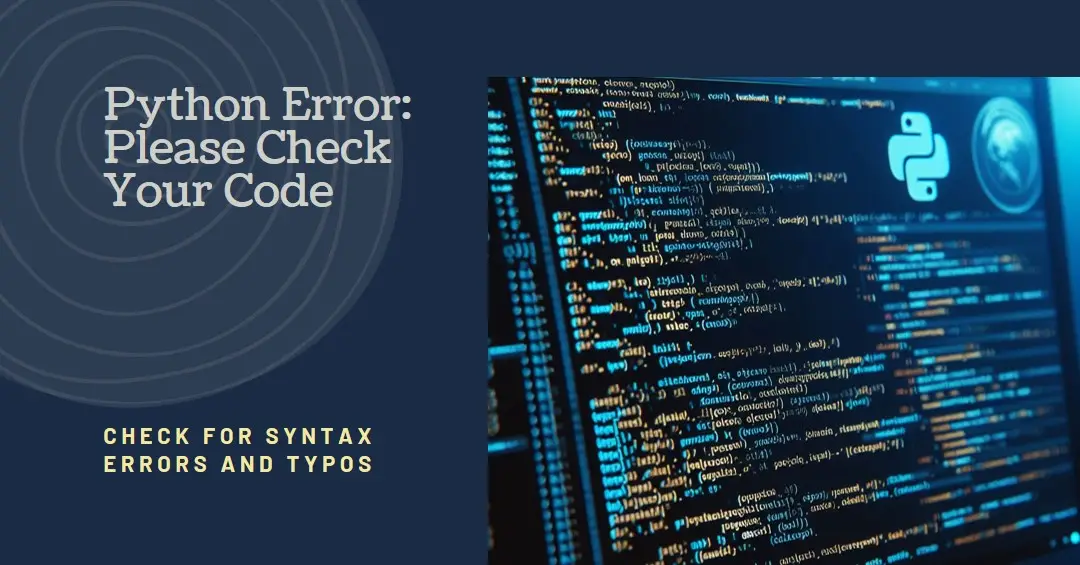D'Addario Guitar Strings - Acoustic Guitar Strings - 80/20 Bronze - For 6 String Guitar - Deep, Bright, Projecting Tone - EJ11 - Light, 12-53
62% OffNugget Countertop Ice Maker, Silonn Chewable Pellet Ice Machine with Self-Cleaning Function, 33lbs/24H, Portable Ice Makers for Home, Kitchen, Office, Green
8% OffWhile working on a Python project, you may run into the frustrating error “ModuleNotFoundError: No module named groundingdino”. This error means Python is unable to locate the specified module, preventing importing and usage.
In this comprehensive guide, we’ll explore the common causes behind this import error and walk through various troubleshooting methods to resolve the “no module named groundingdino” problem. Whether you’re facing this issue with groundingdino specifically or any other module, these steps will help get your imports functioning again.
What Causes the Module Not Found Error?
There are several possible reasons why Python cannot locate the module you are trying to import:
Module Not Installed
The most common cause is that the required module is not installed in your current environment. Double check it exists using:
pip list
If groundingdino is not listed, you’ll need to install it via pip.
Invalid Module Name
Another possibility is the module name specified in the import statement contains a typo or error:
# Invalid, should be groundingdino
import groundingdinno
Double check the exact spelling and capitalization.
Incorrect Paths
The PYTHONPATH and sys.path may not include the directory containing the module. Python will only search the listed paths.
Virtual Environments
If you are working in a virtual env, modules must be installed in that local environment. Global installs won’t be visible.
Circular Imports
When two modules import each other, it causes a circular reference that can result in an error. Reorganize to avoid.
Incompatible Python Versions
If the module was compiled for Python 2, it cannot be imported in a Python 3 environment and vice versa.
In summary, the Python import system relies on modules being importable from the PYTHONPATH. Let’s look at solutions to handle all these potential situations.
How to Fix the Module NotFound Error
Here are step-by-step instructions covering various methods to resolve the “no module named groundingdino” error:
1. Install the Missing Module
Use pip to install the required module:
pip install groundingdino
This will fetch the module if it is available on PyPI and install it into your current environment’s site-packages directory ready for importing.
2. Check for Typos
Examine the import statement for any incorrect naming:
# Check for typos
import groundingdino
Fixing any minor text errors can resolve the problem.
3. Verify Module Name
Sometimes the same library may be available under different names:
# Try all known variants
import groundingdino
import GroundingDino
import grounding_dino
Testing any common permutations can help.
4. Update PYTHONPATH
Add the missing module’s location to the PYTHONPATH environment variable:
# Linux/macOS
export PYTHONPATH="${PYTHONPATH}:/path/to/groundingdino"
# Windows
set PYTHONPATH=%PYTHONPATH%;C:\path\to\groundingdino
Now Python will search that path when importing.
5. Add Path to sys.path
You can also append the module’s location to sys.path programmatically:
import sys
sys.path.append("/path/to/groundingdino")
This similarly tells Python where to search for imports.
6. Use Pip Installing Instead of Copying
Avoid manually copying modules into your project or virtualenvs. Always install using pip so paths are configured automatically.
7. Create a Setup.py File
For a module you are developing, create a setup.py file so pip will handle the path:
from setuptools import setup
setup(
name='groundingdino',
version='1.0',
description='Grounding Dino Module',
packages=['groundingdino']
)
Now pip can install the local module properly.
8. Verify Virtual Environment
Check that you have the virtual environment activated where groundingdino is installed:
# Activate virtual env
source /path/to/venv/bin/activate
Modules must be installed in each specific virtual environment.
9. Reorganize Circular Imports
Refacter to avoid mutual references between two modules:
# groundingdino.py
# Remove import of other module
# import marketserver
# Keep other content
class GroundingDino:
# Class implementation
This breaks the circular dependency allowing each to import.
10. Use the Same Python Version
Make sure both your code and imported module support the same Python version (2.x vs 3.x).
In summary, carefully check for missing modules, incorrect naming, path issues, virtual environment activation, circular imports, and Python version compatibility. Addressing any of these can resolve a “no module named” error.
Real Python Examples
Here are some real examples of fixing this error:
Install missing module
pip install groundingdino
Fix typo in import
# Fix typo
import groundingdino
Add module path
import sys
sys.path.append("/path/to/groundingdino")
Create setup.py
# setup.py
from setuptools import setup
setup(name='groundingdino',
version='1.0',
packages=['groundingdino'])
pip install .
Use virtual environment
source ~/envs/myenv/bin/activate
pip install groundingdino
Troubleshooting the Module Not Found Error
Here is a general troubleshooting process for addressing the “no module named groundingdino” error:
- Check pip list to see if module is installed. Install it if missing.
- Print out sys.path to check locations being searched.
- Verify you have no typos in the module name in the import statement.
- Try importing using the full absolute module name.
- Search your codebase for any circular imports involving that module.
- Test importing the module in a fresh, isolated Python console.
- Restart your Python kernel and clear all imports to reset the environment.
- Ensure your virtual environment is activated if using one.
- Search online thoroughly for relevant fixes and guidance.
- Seek additional troubleshooting tips from Python experts if the issue persists.
With consistent troubleshooting following these steps, you can zero in on the specific cause and correct your imports.
Asking for Python Module Help
If you still cannot resolve the “no module named groundingdino” error after thorough troubleshooting, reach out to the open source community for assistance. Here are some good options:
- Search thoroughly on sites like Stack Overflow and Reddit. Chances are others have solved your issue. Look for key terms like “groundingdino” “ModuleNotFoundError” “no module named” etc.
- For open source modules, check for project issue trackers on GitHub and submit a bug report there.
- Ask a question with specific details on Python subreddits like r/learnpython and r/pythonhelp.
- Join the Python Discord server and ask troubleshooting questions in the community.
- Consider hiring a Python developer to help debug your specific situation.
With an understanding of potential causes and by leveraging community resources, you can get past the frustrating “no module named” error. Never hesitate to seek help from fellow Pythonistas when needed!
Conclusion
In this comprehensive guide, we covered a variety of methods for fixing the common “ModuleNotFoundError: No module named groundingdino” problem. Start by verifying the module is installed, checking for typos, configuring Python paths correctly, resolving circular imports, activating virtual environments, and using consistent Python versions. Employ a systematic troubleshooting approach and leverage community support channels when stuck. With the right insights and techniques, you can resolve your Python import issues and continue coding productively. Let me know if you have any other questions!



















